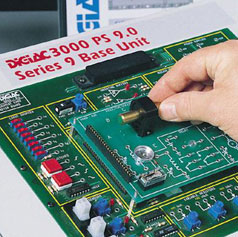
- AEP courses are easier to run than traditional electronic courses.
- Pre-prepared teacher’s theory presentations and support material.
- Modules are flexible and fit into any teaching schedule.
- Curriculum material and hardware are easily managed.
- Provides the ‘core’ electronics skills for a wide range of vocational and hardware programs.
- Optional materials allow the system to deliver A/AS Level Electronics.
- Multimedia learning materials support a wide range of learners.
- Cost-effective way to update existing electronics programs.
- Compatible with exiting D3000 base units and standard test equipment.
- An instructor-delivered PowerPoint theory presentation.
- Student centered computer aided instruction material.
- Continuous assessment
- Optional on-line delivery via ClassCampus
- Class-based wireless assessment system available
DIGIAC AEP topic coverage:
-
Electronic Systems
- Basic electricity
- DC and AC Circuits
- Electromagnetism
- Semiconductors
- Operational amplifiers
- Digital electronics
- Control Systems
- Telecommunications
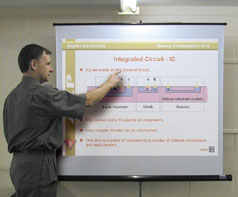
Based on our experiences of working with educators in thousands of programs over the past twenty five years, we have created a series of Electronics resources for teachers.
Ranging from user forums to on-line teacher certification along with configurable tests that can be generated from a bank of questions, these resources have been specifically designed to help teachers make the best use of their Electronics laboratory and to ensure that students gain the most from their learning experience.
Many of the resources have been designed to allow teachers to run lock-step activities in their lab.
-
PowerPoint presentations that can be used for whole group presentations
- Tracked and Managed learning
- Instant Student Assessment
- On-line learning and support
- Academic Support programs
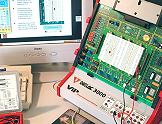
|
This is an integrated instructional module designed specifically to operate within the DIGIAC AEP Electronics Program environment. The module package provides on screen computer-aided instruction materials, printed worksheets and interactive software sufficient for the student to complete the practical learning activities contained the assignments. Instructor Theory presentations are provided by our optional EPP01 Package. Typical topic areas include:
|

|
This is an integrated instructional module designed specifically to operate within the DIGIAC AEP Electronics Program environment. The module package provides on screen computer-aided instruction materials, printed worksheets and interactive software sufficient for the student to complete the practical learning activities contained the assignments. Instructor Theory presentations are provided by our optional EPP01 Package. Typical topic areas include:
|
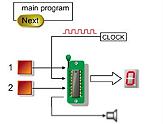
|
This is an integrated instructional module designed specifically to operate within the DIGIAC AEP Electronics Program environment. The module package provides on screen computer-aided instruction materials, printed worksheets and interactive software sufficient for the student to complete the practical learning activities contained the assignments. Instructor Theory presentations are provided by our optional EPP01 Package. Typical topic areas include:
|
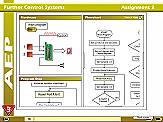
|
This is an integrated instructional module designed specifically to operate within the DIGIAC AEP Electronics Program environment. The module package provides on screen computer-aided instruction materials, printed worksheets and interactive software sufficient for the student to complete the practical learning activities contained the assignments. Instructor Theory presentations are provided by our optional EPP01 Package. Typical topic areas include:
|
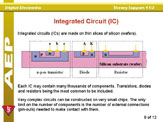
|
This is an integrated instructional module designed specifically to operate within the DIGIAC AEP Electronics Program environment. The module package provides on screen computer-aided instruction materials, printed worksheets and interactive software sufficient for the student to complete the practical learning activities contained the assignments. Instructor Theory presentations are provided by our optional EPP01 Package. Typical topic areas include:
|
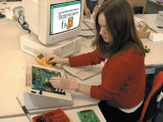
|
This is an integrated instructional module designed specifically to operate within the DIGIAC AEP Electronics Program environment. The module package provides on screen computer-aided instruction materials, printed worksheets and interactive software sufficient for the student to complete the practical learning activities contained the assignments. Instructor Theory presentations are provided by our optional EPP01 Package. Typical topic areas include:
|
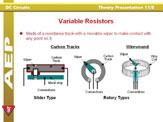
|
This is an integrated instructional module designed specifically to operate within the DIGIAC AEP Electronics Program environment. The module package provides on screen computer-aided instruction materials, printed worksheets and interactive software sufficient for the student to complete the practical learning activities contained the assignments. Instructor Theory presentations are provided by our optional EPP01 Package. Typical topic areas include:
|

|
This is an integrated instructional module designed specifically to operate within the DIGIAC AEP Electronics Program environment. The module package provides on screen computer-aided instruction materials, printed worksheets and interactive software sufficient for the student to complete the practical learning activities contained the assignments. Instructor Theory presentations are provided by our optional EPP01 Package. Typical topic areas include:
|
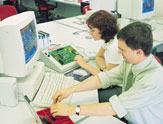
|
This is an integrated instructional module designed specifically to operate within the DIGIAC AEP Electronics Program environment. The module package provides on screen computer-aided instruction materials, printed worksheets and interactive software sufficient for the student to complete the practical learning activities contained the assignments. Instructor Theory presentations are provided by our optional EPP01 Package. Typical topic areas include:
|
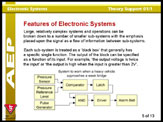
|
This is an integrated instructional module designed specifically to operate within the DIGIAC AEP Electronics Program environment. The module package provides on screen computer-aided instruction materials, printed worksheets and interactive software sufficient for the student to complete the practical learning activities contained the assignments. Instructor Theory presentations are provided by our optional EPP01 Package. Typical topic areas include:
|
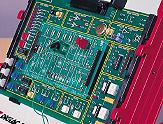
|
This is an integrated instructional module designed specifically to operate within the DIGIAC AEP Electronics Program environment. The module package provides on screen computer-aided instruction materials, printed worksheets and interactive software sufficient for the student to complete the practical learning activities contained the assignments. Instructor Theory presentations are provided by our optional EPP01 Package. Typical topic areas include:
|
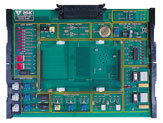
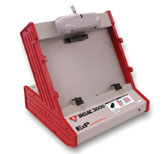
The DIGIAC 3000 ExP provides power
supplies and connection facilities for the complete range of DIGIAC 3000
circuit boards. It can operate either in standalone mode, or via a USB
interface to a host PC. Facilities are provided for switching of faults
into most DIGIAC 3000 circuit boards. Alignment of each circuit board on
the DIGIAC 3000 ExP is achieved by means of an integral guide rail
system. A locking mechanism ensures a reliable and safe electrical
contact. The DIGIAC 3000 ExP meets the power supply requirements for all
DIGIAC 3000 circuit boards. The following power supply outputs are
provided:
|
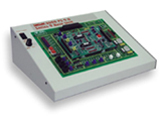
| The Series 9X base unit has been designed to allow students to perform experimentation using all modules in the Electronics Principles and Communications Principles ranges. The unit has a built-in electronics master board providing a central mounting area for the circuit cards, plus a range of input/output and signal processing circuits. Connection of the base unit to a student PC workstation allows automatic insertion of switched faults. |
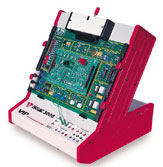
| This new Virtual Instrument
Platform uses up-to-date technology combined with attractive
Windows-based programming to integrate a full set of virtual instruments
into one self-contained unit. The unit is controlled by a PC through
either a fast serial port or USB port. Specifically designed for use with all the existing DIGIAC 3000 study modules and circuit boards, this new unit is fully compatible with both our ClassAct and ClassCampus learning management systems. The unit features a new vertical mount console design which makes it more suited to use next to a PC workstation. A single handed circuit load/unload mechanism makes it easy for the user to insert the D3000 circuit boards and a special barcode reader is used to detect which board has been inserted. A complete set of virtual instruments is integrated into the new VIP unit. These run on the student's PC and provide virtual multimeters, oscilloscope and function generator as they follow the on-screen learning material. When the VIP unit is used in conjunction with our ClassAct or ClassCampus learning management systems the Instructor can monitor the inputs and outputs of the virtual instruments and control the power supplies on the VIP unit. They can also switch faults into the circuit board remotely or at the unit via a password protected utility. The D3000 Computer Aided Instruction can also switch faults into any circuit board mounted on the VIP unit. Students can store data captured by the virtual instruments for inclusion in their paper-based workbooks or electronic portfolios. |

|
This is an integrated instructional module designed specifically to operate within the DIGIAC AEP Electronics Program environment. The module package provides on screen computer-aided instruction materials, printed worksheets and interactive software sufficient for the student to complete the practical learning activities contained the assignments. Instructor Theory presentations are provided by our optional EPP01 Package. Typical topic areas include:
|

|
This is an integrated instructional module designed specifically to operate within the DIGIAC AEP Electronics Program environment. The module package provides on screen computer-aided instruction materials, printed worksheets and interactive software sufficient for the student to complete the practical learning activities contained the assignments. Instructor Theory presentations are provided by our optional EPP01 Package. Typical topic areas include:
|

|
This is an integrated instructional module designed specifically to operate within the DIGIAC AEP Electronics Program environment. The module package provides on screen computer-aided instruction materials, printed worksheets and interactive software sufficient for the student to complete the practical learning activities contained the assignments. Instructor Theory presentations are provided by our optional EPP01 Package. Typical topic areas include:
|
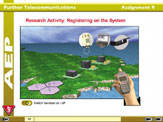
|
This is an integrated instructional module designed specifically to operate within the DIGIAC AEP Electronics Program environment. The module package provides on screen computer-aided instruction materials, printed worksheets and interactive software sufficient for the student to complete the practical learning activities contained the assignments. Instructor Theory presentations are provided by our optional EPP01 Package. Typical topic areas include:
|